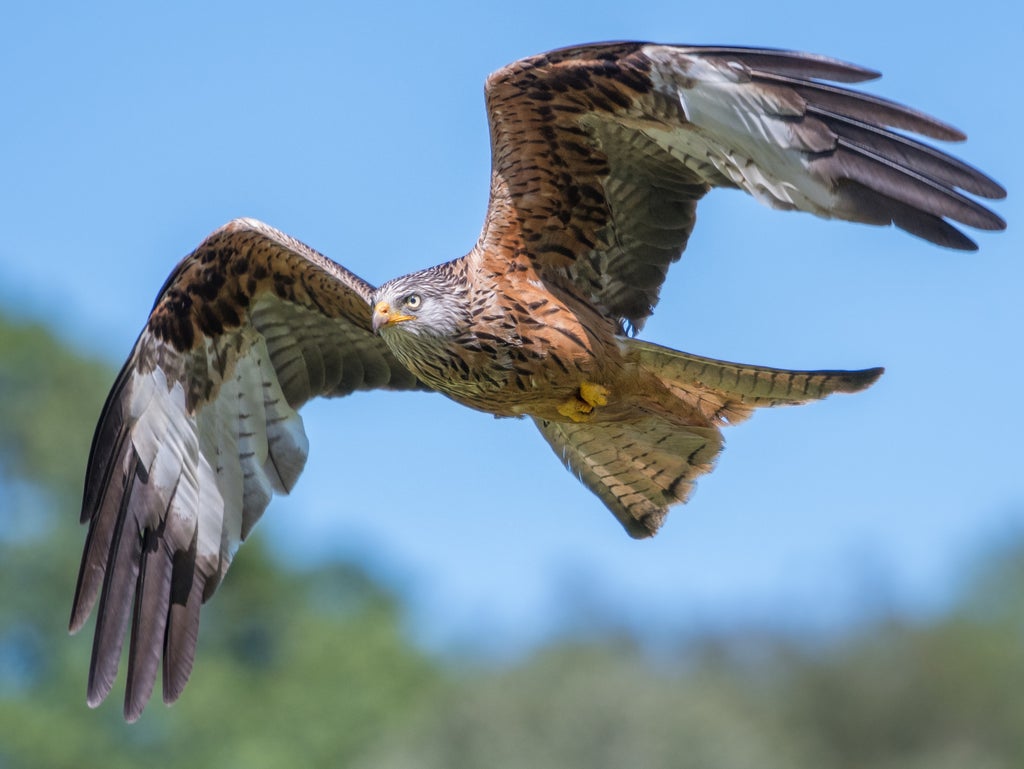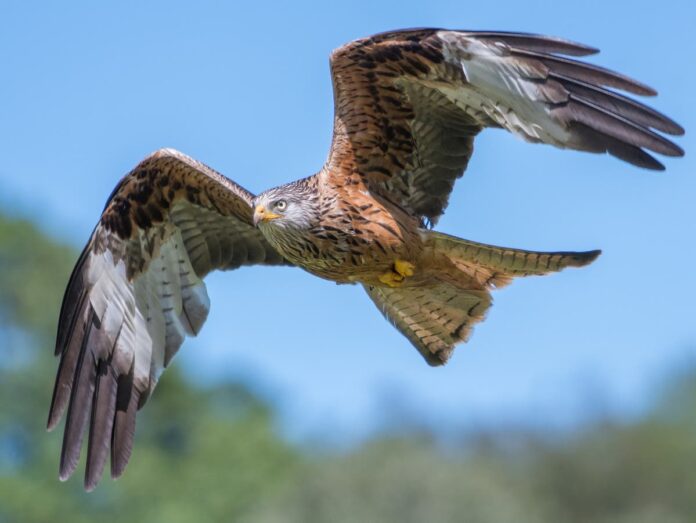[ad_1]

The number of birds of prey shot, trapped or poisoned hit record levels last year, which the RSPB suspects was linked to game bird shooting.
Persecution of the protected birds, including red kites and golden eagles, was the worst in 30 years last year, with 137 known crimes, the charity says. But those are only confirmed cases, and it is feared the real figure is higher.
The wildlife experts believe the pandemic lockdown helped the criminals because fewer walkers, who could have spotted illegal activity, were out and about.
The victims included 58 buzzards, 20 red kites, 16 peregrines, six sparrowhawks, three goshawks, rare hen harriers and golden eagles, according to the RSPB’s Birdcrime 2020 report.
Almost two-thirds of crimes – 85 – were on or near land used for or linked to game bird shooting, the report says.
“Bird of prey persecution shows a clear link to pheasant, partridge and grouse shooting, with incidents being more widespread in lowland areas and more concentrated in upland areas,” a spokesman said.
Gamebird shooters target birds of prey because they think the raptors – protected by law – would otherwise eat the meat birds they want to kill.
Chris Packham, who has previously described bird of prey killings as “out of control”, said: “No one should suffer the horror of witnessing a buzzard being shot out of the sky or having a pet killed by an illegal poison bait.
“The appalling persecution of birds of prey has become chillingly commonplace, but public anger is mounting and cannot be ignored.”
Grouse estates receive public money under a controversial scheme intended to have environmental benefits. A 2019 investigation found they were handed more than £10m of taxpayers’ money in 2018.
Last autumn, the Scottish government announced it would start licensing grouse moors, and the RSPB is calling on the Westminster government follow suit.
Of the 137 confirmed cases – the highest total since recording began in 1990 – 99 were in England.
At the weekend, a hen harrier disappeared from an area dominated by driven grouse moors within the North Pennines Area of Outstanding Natural Beauty.
The report says: “In perhaps the most damning episode, a satellite tag was discovered which had been dumped in a river after being removed from a golden eagle that disappeared on a grouse moor in 2016.
“The incident was a stark reminder of the extensive and organised effort of criminals to target birds of prey and dispose of the evidence.”
Mark Thomas, the RSPB’s head of investigations, said: “Although we have become used to the illegal killing of birds of prey, the figure for 2020 is truly shocking.
“We are in a climate and nature emergency. All land must be managed legally and sustainably for people and for nature, and not accelerate the worrying loss of UK wildlife we are already experiencing.
“Licensing should be conditional on compliance with wildlife protection laws, and if breached, should result in removal of the right to shoot. Those shoot operators who behave legally and responsibly should have nothing to fear from this sanction.”
Killing or injuring a bird of prey can result in an unlimited fine or up to six months in jail, but there were only two prosecutions for raptor persecution offences last year.
Chief Inspector Kevin Kelly, head of the National Wildlife Crime Unit, said: “I am disappointed in such a significant rise in incidents as the crime figures go a long way to undermine the hard work that’s done daily to tackle raptor persecution.
“The priority delivery group holds the key to success. This has gone through a period of change, bringing leadership, accountability and some fresh positive partners in.”
[ad_2]
Source link













